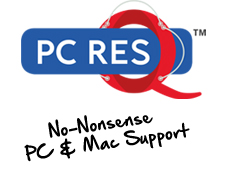I use both a PC and Mac for my business but the Mac has slowed down dramatically over the past year. I remember the good old days when I took the shiny new machine out of the box, pressed the on switch and everything happened in an instant. Do you feel the same way about your system but don’t want to be spending a fortune in speeding it up?
Removing unused programs from your machine and disabling items from running at startup will only have a slight improvement on the performance. There is one thing you can do to your PC or Mac that can seriously turn the clock back – and that is to add additional memory. I’m not talking about disk space here; this is the physical RAM (Random Access Memory) that’s installed in your machine.
Most new computers over the last 3 years are 64-Bit machines with 4GB of RAM pre-installed. In the majority of cases, this can be increased to 8GB. Think of it as doubling the brain power, so that can only have a positive result on the performance. If only we could do that as human beings!
To give you an example – the Mac I mentioned earlier is a 2008 machine and came with 4GB of RAM. I installed an additional 2GB to bring it up to the maximum allowed of 6GB and it’s made such a massive difference. No more waiting for programs to load. Relief!
So I’ll show you how to check the total memory that’s installed in your machine and a couple of websites you can use to see if it’s possible to upgrade it.
To check the total RAM installed on a Mac, click on the Apple icon in the top left of your screen and select About This Mac. Take note of the total GB and type of machine.
On a Windows PC, go to Start / Control Panel / System.
Now visit http://www.offtek.co.uk or http://www.mrmemory.co.uk and select the exact model of computer you have. That’ll show you the default RAM for a new machine and the maximum it can take. So if the maximum allowed is more than what you have installed – Good News!
So if you’ve been umming and ahing whether to replace your computer because of its slowness, I’d suggest you give this a try first.






